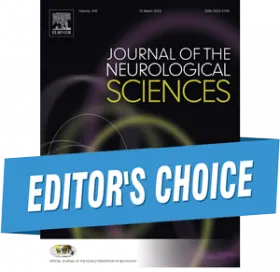
Image: iStockphoto.com
Authors: Olena Korvatska, Stephanie A. Bucks, Rebecca A. Yoda, Amber Nolan, Michael O. Dorschner, Debby Tsuang, Suman Jayadev, Wendy H. Raskind, Thomas D. Bird
Editor's Choice
Journal of the Neurological Sciences. REVIEW ARTICLE| VOLUME 452, 120763, SEPTEMBER 15, 2023
DOI: https://doi.org/10.1016/j.jns.2023.120763 ⧉
Highlights
-
Mutations in NOTCH3 cause CADASIL, characterized by strokes and dementia.
- NOTCH3 p.Cys201Arg and other genetic risks in a family with Alzheimer's disease (AD).
- Cysteine 201 in NOTCH3 is a mutation hotspot for CADASIL and vascular dementia.
- CADASIL may be confused with AD at both clinical and neuropathological levels.
NOTCH3 is the causative gene for autosomal dominant cerebral arteriopathy with subcortical infarctions and leukoencephalopathy (CADASIL) which is associated with both stroke and dementia. When CADASIL presents primarily as dementia it can be difficult to distinguish from Alzheimer's disease (AD) at both the clinical and neuropathological levels.
The authors performed exome sequencing of several affected individuals from a large family affected with AD. PCR amplification and direct Sanger sequencing were used to verify variants detected by exome analysis and to screen family members at-risk to carry those variants. Neuropathologic brain evaluation by immunohistochemistry and MRI were performed for the carriers of the NOTCH3 variant.
In a three-generation family with AD, the researchers found a c.601 T > C p.Cys201Arg variant in the NOTCH3 gene that caused clinical and neuropathological manifestations of CADASIL. These features included earlier onset of dementia accompanied by behavioral abnormalities in the father and son and white matter abnormalities in the asymptomatic grandson. The family is one branch of a large pedigree studied by the Alzheimer's Disease Sequencing Project (ADSP). As part of the ADSP linkage analysis and whole genome sequencing endeavor, an ABCA1 variant, p.Ala937Val, was previously found associated with AD in this pedigree.
The findings, together with other reported pathogenic missense variants of the C201 codon in NOTCH3, support the role of cysteine 201 as a mutation hotspot for CADASIL and highlight the genetic complexity both clinically and pathologically of AD and related dementia.








